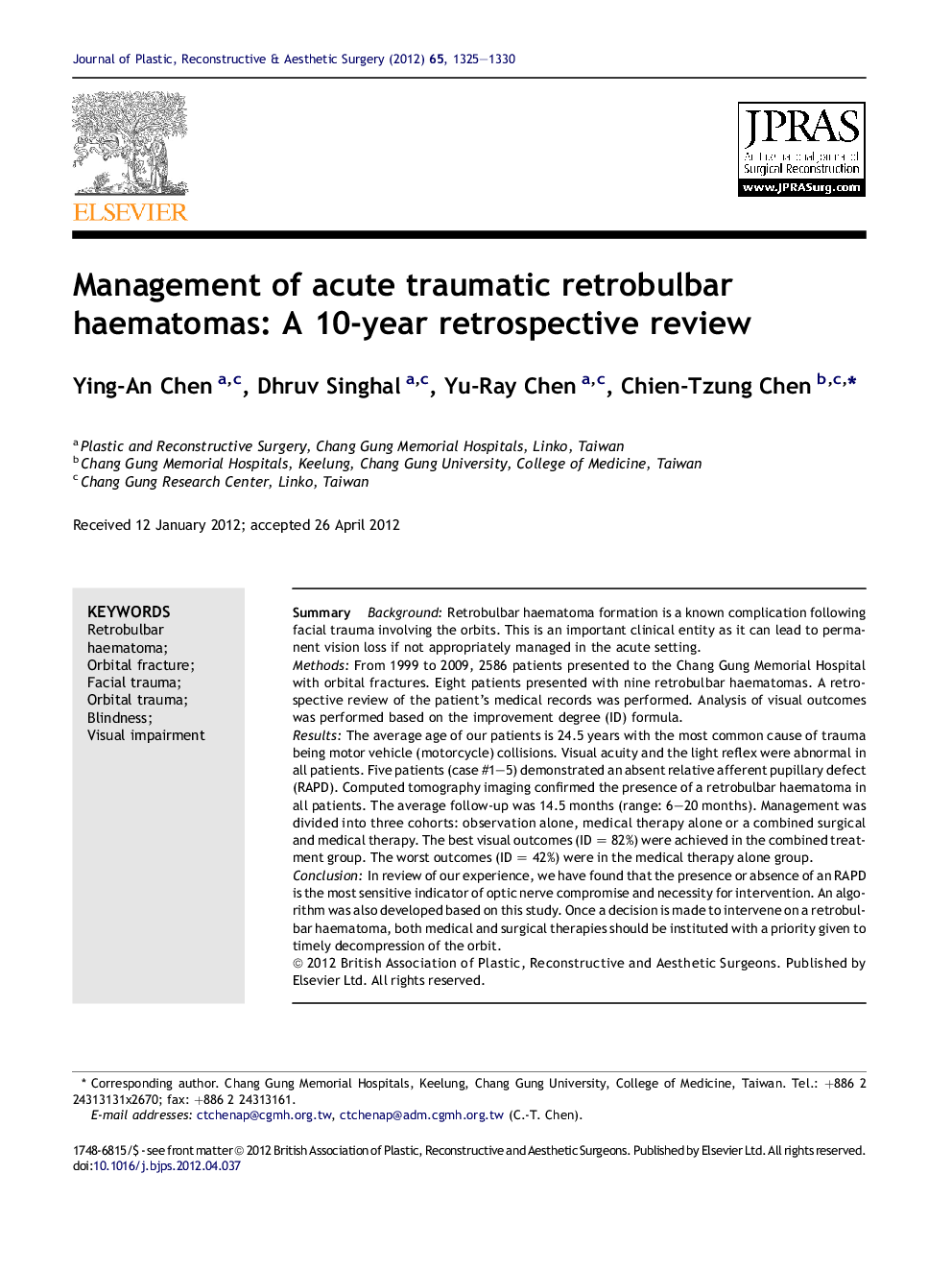| Article ID | Journal | Published Year | Pages | File Type |
|---|---|---|---|---|
| 4119255 | Journal of Plastic, Reconstructive & Aesthetic Surgery | 2012 | 6 Pages |
SummaryBackgroundRetrobulbar haematoma formation is a known complication following facial trauma involving the orbits. This is an important clinical entity as it can lead to permanent vision loss if not appropriately managed in the acute setting.MethodsFrom 1999 to 2009, 2586 patients presented to the Chang Gung Memorial Hospital with orbital fractures. Eight patients presented with nine retrobulbar haematomas. A retrospective review of the patient's medical records was performed. Analysis of visual outcomes was performed based on the improvement degree (ID) formula.ResultsThe average age of our patients is 24.5 years with the most common cause of trauma being motor vehicle (motorcycle) collisions. Visual acuity and the light reflex were abnormal in all patients. Five patients (case #1–5) demonstrated an absent relative afferent pupillary defect (RAPD). Computed tomography imaging confirmed the presence of a retrobulbar haematoma in all patients. The average follow-up was 14.5 months (range: 6–20 months). Management was divided into three cohorts: observation alone, medical therapy alone or a combined surgical and medical therapy. The best visual outcomes (ID = 82%) were achieved in the combined treatment group. The worst outcomes (ID = 42%) were in the medical therapy alone group.ConclusionIn review of our experience, we have found that the presence or absence of an RAPD is the most sensitive indicator of optic nerve compromise and necessity for intervention. An algorithm was also developed based on this study. Once a decision is made to intervene on a retrobulbar haematoma, both medical and surgical therapies should be instituted with a priority given to timely decompression of the orbit.
